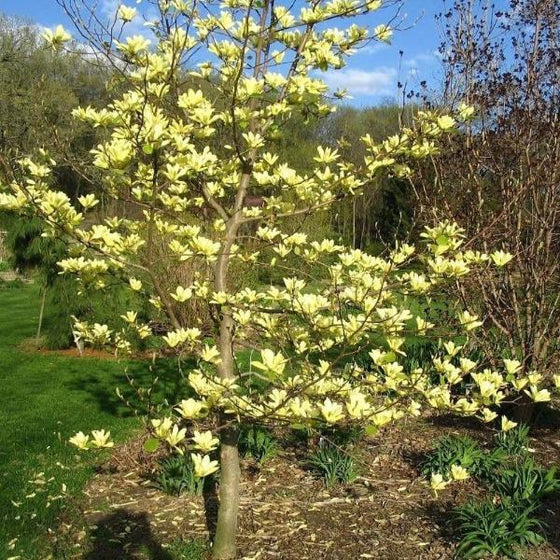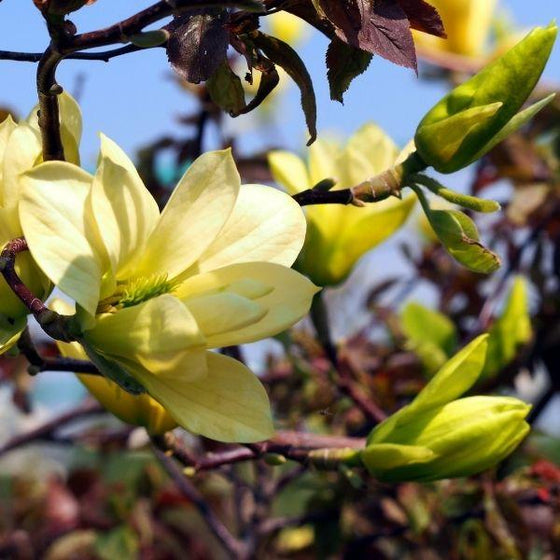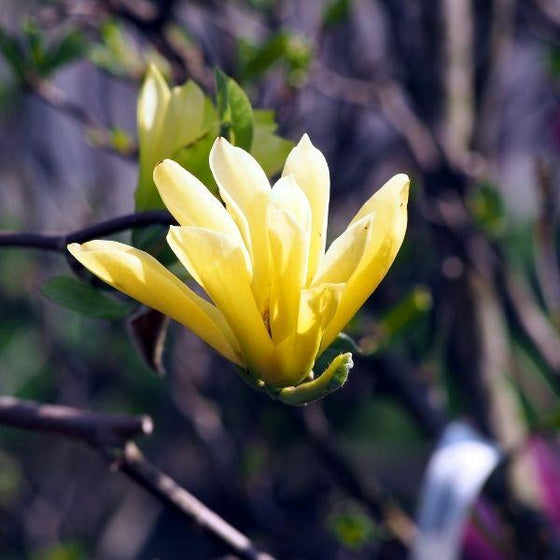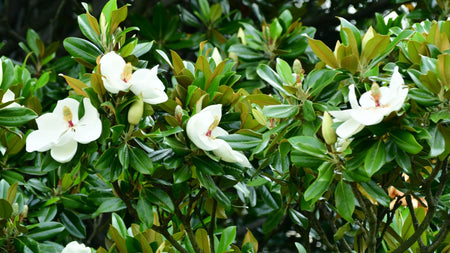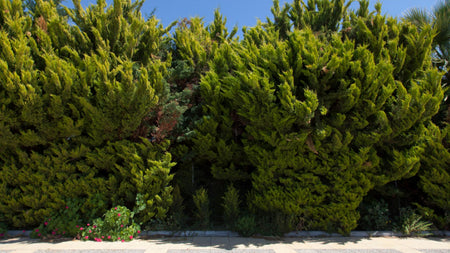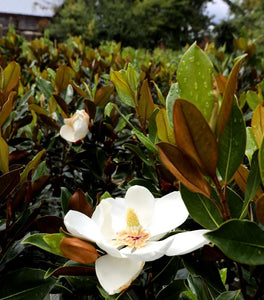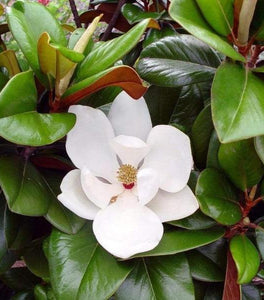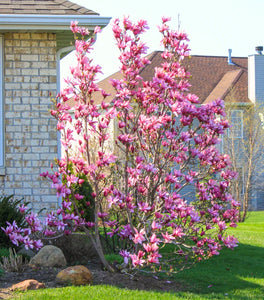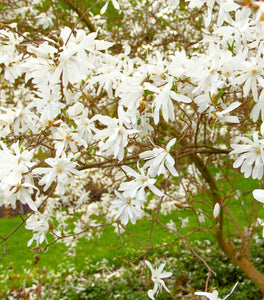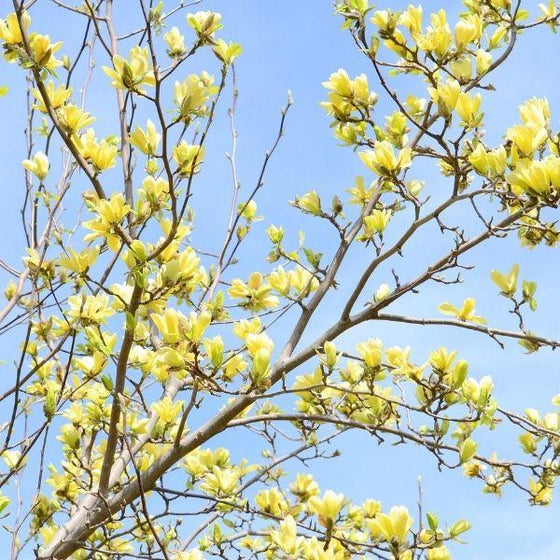
Images Depict Mature Plants
Magnolia Butterflies Trees
Magnolia Butterflies is a stunning deciduous magnolia tree known for its unique, buttery yellow blooms that emerge in early spring before the foliage appears. This exceptional cultivar produces an abundance of fragrant, upright, tulip-shaped flowers that resemble butterflies in flight—hence the name. Each blossom glows with a rich golden hue and stands out beautifully against bare branches, creating a dramatic and eye-catching focal point in the landscape.
Reaching a mature height of 15 to 20 feet with a similar spread, Magnolia Butterflies boasts a pyramidal form that fits well in both small gardens and large estate settings. It thrives in full sun to partial shade and prefers moist, well-drained soil. Hardy in USDA Zones 5–9, this cold-tolerant magnolia is an excellent choice for gardeners seeking early-season color, fragrance, and long-lasting beauty. The deep green foliage that follows the bloom period provides a lush backdrop throughout the summer months.
Ideal for use as a specimen tree, anchor plant, or accent in mixed borders, Magnolia Butterflies adds elegance and seasonal interest to any garden design. Its early blooms offer vital food for emerging pollinators, while its manageable size makes it suitable for urban landscapes and smaller yards. With its rare flower color, refined structure, and reliable performance, Magnolia Butterflies is a must-have for collectors and landscape designers alike.
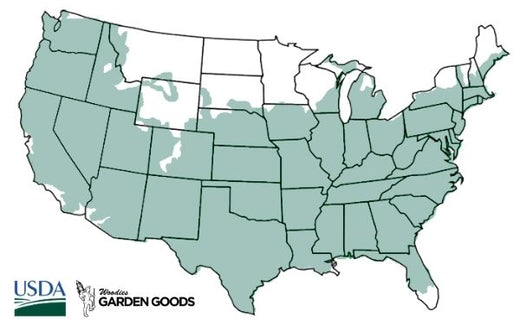
| Hardiness Zone: | 5-9 |
|---|---|
| Mature Height: | 15 to 20 Feet |
| Mature Width: | 10 to 15 Feet |
| Classification: | Broad leaved flowering tree, early spring flowering |
| Sunlight: | Full sun to part sun |
| Habit: | Upright, pyramidal shape |
| Foliage: | Green |
| Flower Color: | Yellow, fragrant flowers in late spring |
| Pruning Season: | No pruning needed |
| Soil Condition: | Any well drained soil |
| Water Requirements: | Water well until established |
| Uses: | Full sun brings out the best fall color; will adapt to drier sites |
How to Care for Magnolia Butterflies
Once you buy a Magnolia Butterflies Tree, make sure to read about the recommended care instructions to keep this plant healthy and thriving.
How do I plant a Magnolia Butterflies Tree?
To plant a Magnolia Butterflies tree, choose a site with full sun to partial shade and well-drained, slightly acidic soil for optimal growth and flowering. This compact magnolia prefers a sheltered location protected from harsh winter winds and late frosts, which can damage the early spring blooms. Begin by digging a hole twice as wide and just as deep as the root ball. Gently loosen the roots before placing the tree in the hole, ensuring that the top of the root ball is level with the surrounding soil. Backfill with a mix of native soil and compost, tamp gently to eliminate air pockets, and water thoroughly to help settle the soil. After planting, apply a 2–3 inch layer of organic mulch around the base of your Magnolia Butterflies tree, keeping it a few inches away from the trunk to prevent rot. Mulching helps conserve soil moisture, regulate temperature, and suppress weeds. Water the tree regularly during its first year, especially during dry spells, to establish a strong root system. Planting in early spring or fall is ideal, giving the tree time to settle before facing extreme summer heat or winter cold. With proper planting and early care, your Magnolia Butterflies will reward you with stunning, fragrant yellow blooms and elegant structure for years to come.
How do I water Magnolia Butterflies Trees?
Watering your Magnolia Butterflies tree properly is essential, especially during its first few years as it establishes a strong root system. In the first growing season, water deeply once or twice a week, depending on rainfall and soil type. Focus on keeping the soil consistently moist but never soggy—overwatering can lead to root rot. Use a soaker hose or slow trickle at the base of the tree to encourage deep root growth, and avoid overhead watering to minimize the risk of fungal diseases. Well-drained soil is key to preventing waterlogged conditions. Once established, Magnolia Butterflies trees are moderately drought-tolerant but still benefit from occasional deep watering during dry periods, particularly in hot summer months. Check the soil regularly, and water when the top 2–3 inches feel dry to the touch. A 2–3 inch layer of mulch around the tree helps retain moisture, regulate soil temperature, and reduce watering frequency. Avoid letting the soil dry out completely, especially during bud formation and blooming season, to ensure healthy flower production. With consistent and mindful watering, your Magnolia Butterflies will thrive and produce its signature yellow blooms year after year.
How do I fertilize my Butterfly Magnolia Trees?
Fertilizing your Butterfly Magnolia tree correctly is important for supporting healthy growth, vibrant foliage, and abundant flowering. Begin by applying a balanced, slow-release fertilizer (such as 10-10-10) in early spring, just as new growth begins to emerge. This provides essential nutrients during the tree’s most active growth phase. Spread the fertilizer evenly around the drip line of the tree, keeping it several inches away from the trunk to prevent root burn, and water thoroughly after application. For an organic option, use compost or well-rotted manure to enrich the soil and improve long-term soil health. Avoid high-nitrogen fertilizers, as these can promote excessive leaf growth at the expense of flowers. If your Magnolia Butterflies tree shows signs of nutrient deficiency—such as pale leaves or reduced flowering—a soil test can help identify specific needs and guide supplemental feeding. In general, established trees may only require fertilization once per year, while young or newly planted magnolias benefit from a second light feeding in midsummer. With proper fertilization and consistent care, your Butterfly Magnolia tree will reward you with strong growth, a graceful form, and masses of fragrant yellow blooms that brighten the spring landscape.

How and when should I Prune My Magnolia Butterflies Trees?
Pruning your Magnolia Butterflies tree should be done with care and timing to preserve its natural shape and encourage healthy growth. The best time to prune is in late spring to early summer, just after the tree finishes blooming. This allows you to remove any dead, damaged, or crossing branches without sacrificing next year’s flower buds, which form on old wood. Use clean, sharp pruning tools to make precise cuts just outside the branch collar, and avoid removing more than one-third of the tree’s canopy at any one time to reduce stress. Light, corrective pruning can help maintain the tree’s beautiful upright form and allow better air circulation through the canopy. Avoid heavy or unnecessary pruning during the dormant season or in late summer and fall, as this can remove flower buds and make the tree more susceptible to winter damage. If shaping is needed, focus on selectively thinning out interior branches to maintain structure without altering the tree's natural silhouette. Magnolia Butterflies, with its elegant habit and bright yellow blooms, requires minimal pruning when properly sited in full sun and well-drained soil. With careful seasonal pruning, your Magnolia Butterflies tree will remain healthy, balanced, and stunningly beautiful for years to come.

